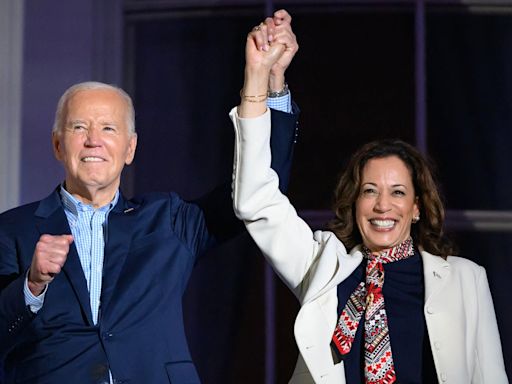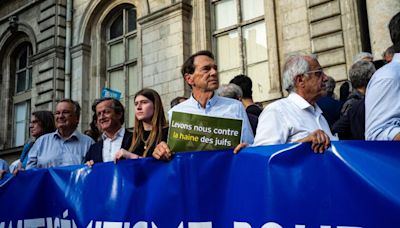Search results
A political party is an organization that coordinates candidates to compete in a particular country's elections. It is common for the members of a party to hold similar ideas about politics, and parties may promote specific ideological or policy goals.
- Overview
- Types of political party
- Cadre parties
political party, a group of persons organized to acquire and exercise political power. Political parties originated in their modern form in Europe and the United States in the 19th century, along with the electoral and parliamentary systems, whose development reflects the evolution of parties. The term party has since come to be applied to all organized groups seeking political power, whether by democratic elections or by revolution.
In earlier, prerevolutionary, aristocratic and monarchical regimes, the political process unfolded within restricted circles in which cliques and factions, grouped around particular noblemen or influential personalities, were opposed to one another. The establishment of parliamentary regimes and the appearance of parties at first scarcely changed this situation. To cliques formed around princes, dukes, counts, or marquesses there were added cliques formed around bankers, merchants, industrialists, and businessmen. Regimes supported by nobles were succeeded by regimes supported by other elites. These narrowly based parties were later transformed to a greater or lesser extent, for in the 19th century in Europe and America there emerged parties depending on mass support.
The 20th century saw the spread of political parties throughout the entire world. In less-developed countries, large modern political parties have sometimes been based on traditional relationships, such as ethnic, tribal, or religious affiliations. Moreover, many political parties in less-developed countries are partly political, partly military. Certain socialist and communist parties in Europe earlier experienced the same tendencies.
These last-mentioned European parties demonstrated an equal aptitude for functioning within multiparty democracies and as the sole political party in a dictatorship. Developing originally within the framework of liberal democracy in the 19th century, political parties have been used since the 20th century by dictatorships for entirely undemocratic purposes.
A fundamental distinction can be made between cadre parties and mass-based parties. The two forms coexist in many countries, particularly in western Europe, where communist and socialist parties have emerged alongside the older conservative and liberal parties. Many parties do not fall exactly into either category but combine some characteristics o...
Cadre parties—i.e., parties dominated by politically elite groups of activists—developed in Europe and America during the 19th century. Except in some of the states of the United States, France from 1848, and the German Empire from 1871, the suffrage was largely restricted to taxpayers and property owners, and, even when the right to vote was given to larger numbers of people, political influence was essentially limited to a very small segment of the population. The mass of people were limited to the role of spectators rather than that of active participants.
Students save 67%! Learn more about our special academic rate today.
Learn More
The cadre parties of the 19th century reflected a fundamental conflict between two classes: the aristocracy on the one hand and the bourgeoisie on the other. The former, composed of landowners, depended upon rural estates on which a generally unlettered peasantry was held back by a traditionalist clergy. The bourgeoisie, made up of industrialists, merchants, tradesmen, bankers, financiers, and professional people, depended upon the lower classes of clerks and industrial workers in the cities. Both aristocracy and bourgeoisie evolved their own ideology. Bourgeois liberal ideology developed first, originating at the time of the English revolution of the 17th century in the writings of John Locke, an English philosopher. It was then developed by French philosophers of the 18th century. In its clamouring for formal legal equality and acceptance of the inequities of circumstance, liberal ideology reflected the interests of the bourgeoisie, who wished to destroy the privileges of the aristocracy and eliminate the lingering economic restraints of feudalism and mercantilism. But, insofar as it set forth an egalitarian ideal and a demand for liberty, bourgeois classical liberalism expressed aspirations common to all people. Conservative ideology, on the other hand, never succeeded in defining themes that would prove as attractive, for it appeared to be more closely allied to the interests of the aristocracy. For a considerable period, however, conservative sentiment did maintain a considerable impact among the people, since it was presented as the expression of the will of God. In Roman Catholic countries, in which religion was based upon a hierarchically structured and authoritarian clergy, the conservative parties were often the clerical parties, as in France, Italy, and Belgium.
Conservative and liberal cadre parties dominated European politics in the 19th century. Developing during a period of great social and economic upheaval, they exercised power largely through electoral and parliamentary activity. Once in power, their leaders used the power of the army or of the police; the party itself was not generally organized for violent activity. Its local units were charged with assuring moral and financial backing to candidates at election time, as well as with maintaining continual contact between elected officials and the electorate. The national organization endeavoured to unify the party members who had been elected to the assemblies. In general, the local committees maintained a basic autonomy and each legislator a large measure of independence. The party discipline in voting established by the British parties—which were older because of the fact that the British Parliament was long established—was imitated on the Continent hardly at all.
The first U.S. political parties of the 19th century were not particularly different from European cadre parties, except that their confrontations were less violent and based less on ideology. The first U.S. form of the struggle between the aristocracy and the bourgeoisie, between conservative and liberal, was carried out in the form of the Revolutionary War, in which Great Britain embodied the power of the king and the nobility, the insurgents that of the bourgeoisie and liberalism. Such an interpretation is, of course, simplified. There were some aristocrats in the South and, in particular, an aristocratic spirit based on the institutions of slaveholding and paternalistic ownership of land. In this sense, the Civil War (1861–65) could be considered as a second phase of violent conflict between the conservatives and the liberals. Nevertheless, the United States was from the beginning an essentially bourgeois civilization, based on a deep sense of equality and of individual freedom. Federalists and Anti-Federalists, Republicans—all belonged to the liberal family since all shared the same basic ideology and the same system of fundamental values and differed only in the means by which they would realize their beliefs.
Jul 3, 2019 · A political party is an organized body of like-minded people who work to elect candidates for public office who represent their values on matters of policy. In the U.S., home to a strong two-party system, the major political parties are the Republicans and the Democrats.
This is a list of political parties in Singapore, including existing and historical ones. The earliest political parties were established in the lead-up to Singapore first Legislative Council elections in 1948. Singapore is a republic.
Jun 23, 2024 · Political party - Ideology, Platforms, Elections: Whether they are conservative or revolutionary, whether they are a union of notables or an organization of the masses, whether they function in a pluralistic democracy or in a monolithic dictatorship, parties have one function in common: they all participate to some extent in the ...
Aug 9, 2022 · Why people identify with – or lean toward – a political party. Republicans and Democrats are as likely to point to the harm of the other party’s policies as a major reason for affiliating with their party as they are to point to the good of their party’s policies.
political party: An organization of people with similar political ideologies that seeks to influence public policy by getting its candidates elected. party platform: A list of goals outlining a party’s positions on issues and political priorities.






